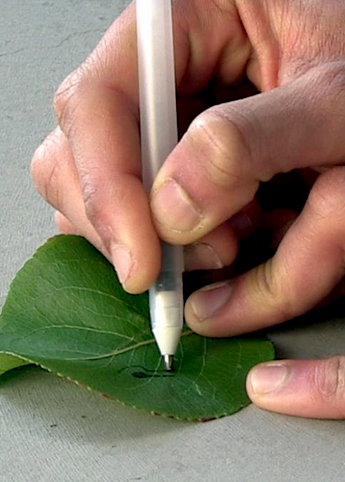Ink that thinks for sensitive pens
 Nanoengineers have developed an ink that can make a sensor just by drawing it on.
Nanoengineers have developed an ink that can make a sensor just by drawing it on.
The simple new tool could allow anyone to build sensors, anywhere, including physicians in the clinic, patients in their home and soldiers in the field.
A team from the University of California filled off-the-shelf ballpoint pens with the inks, and were able to draw sensors to measure glucose directly on the skin and sensors to measure pollution on leaves.
The ink is made by embedding highly-conductive graphite into polyethylene glycol, adding chitosan to make it sticky, and xylitol to stabilise enzymes that react with the chemicals that the DIY sensors are designed to monitor.
Down the track, researchers envision sensors that can be drawn directly on smart phones for personalised and inexpensive health monitoring. They could be added to external building walls for monitoring of toxic gas pollutants, and could even be used on the battlefield to detect explosives and nerve agents.
The nanoengineers also demonstrated that the sensors could be drawn directly on the skin and communicate with a Bluetooth-enabled electronic device that controls electrodes called a potentiostat, to gather data.
The promising breakthrough has already led to some exciting ideas.
One plan is for the pens to draw sensors that detect pollutants and potentially harmful chemicals sensors on the spot.
Researchers demonstrated that this was possible by drawing a sensor on a leaf with an ink loaded with enzymes that react with phenol, an industrial chemical, which can also be found in cosmetics, including sunscreen.
The leaf was then dipped in a solution of water and phenol and the sensor was connected to a pollution detector.
The same design could be modified to react with other pollutants including heavy metals or pesticides.
The project is the next step for a team that recently developed non-invasive glucose sensors in the form of temporary tattoos.
Next steps include connecting the sensors wirelessly to monitoring devices, and investigating how the sensors perform in difficult conditions such as extreme temperatures, varying humidity and extended exposure to sunlight.








 Print
Print